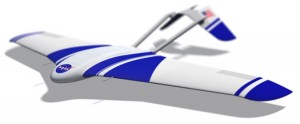 The NASA Ares project is a rocket propelled UAV designed to fly one mile above the surface of Mars. Ares is five meters long with a six meter wingspan. It can provide high resolution images so fine it could read the ingredients off a candy wrapper from a mile away.
The NASA Ares project is a rocket propelled UAV designed to fly one mile above the surface of Mars. Ares is five meters long with a six meter wingspan. It can provide high resolution images so fine it could read the ingredients off a candy wrapper from a mile away.
Ares has been flying at 125,000 feet over Oregon to simulate the atmospheric conditions on Mars. The atmosphere on Mars is only about 1% as dense as earth, which presented quite a challenge to aircraft designers.
The Ares UAV contains many sensors and scientific instruments. Most importantly, a mass spectrometer to measure the composition of Mars atmosphere. If the Mars atmosphere shows significant quantities of “biological gasses”, gasses which are produced primarily by living organisms, it would be a strong indication that life once lived, or is living, on Mars. Coming after NASA’s recent discovery of water on Mars, the presence of these biological gases would provide further evidence that Mars could host life.
Perhaps the coolest aspect of Ares is that once flying over Mars, the aircraft will be streaming live images of the Martian surface to viewers in the United States and around the world.


